Are you having trouble with your garage door opener? Is it not working as efficiently as it used to? If you notice that your garage door is opening and closing on its own, or if the remote control isn’t responding properly, then you may be experiencing RF interference.
Radio Frequency (RF) interference with a garage door opener can be frustrating, leading to inconsistent performance and unreliable operation. RF interference often originates from various sources, such as household electronics, nearby radio transmitters, or even other wireless devices operating on similar frequencies. Identifying and mitigating these sources of interference is crucial to ensuring your garage door opener functions smoothly and reliably.
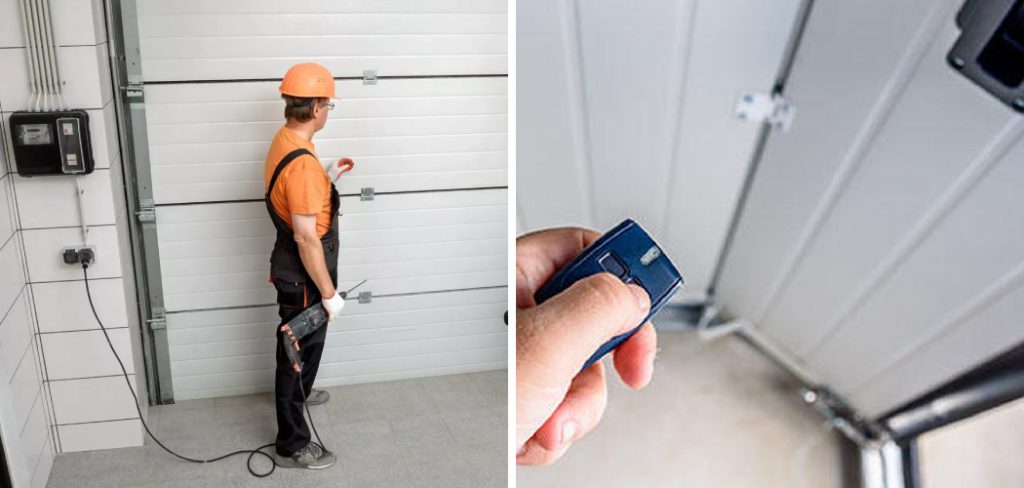
In this guide, we’ll explore the common causes of RF interference and provide practical steps on how to fix RF interference with garage door opener, restoring the dependable operation of your garage door opener.
What Will You Need?
To fix RF interference with your garage door opener, you’ll need a few tools and materials:
- A ladder to access the garage door opener
- A screwdriver or drill (depending on your specific opener model)
- Electrical tape
- Ferrite choke (if needed)
Once you have these items, you can troubleshoot and fix the interference issue.
10 Easy Steps on How to Fix RF Interference With Garage Door Opener
Step 1: Identify the Source of Interference
The first step in fixing RF interference is identifying its source. Most commonly, household electronics such as cordless phones, Wi-Fi routers, or baby monitors can cause interference with your garage door opener. Other sources can include nearby radio towers or wireless devices operating on similar frequencies.
Start by turning off or unplugging any potential sources of interference one by one and testing your garage door opener after each step. This will help you pinpoint the exact source of the problem.
Step 2: Check the Batteries in Your Remote Control
Sometimes, the issue might be as simple as low or dead batteries in your remote control. Ensure that the batteries are fresh and properly installed; even if they appear to have life, replacing them can sometimes resolve sporadic problems.
If replacing the batteries doesn’t fix the issue, consider the possibility that the remote itself is malfunctioning. If available, try using a second remote to determine if the problem persists. This step helps rule out whether the issue lies with a single remote or something more systemic.
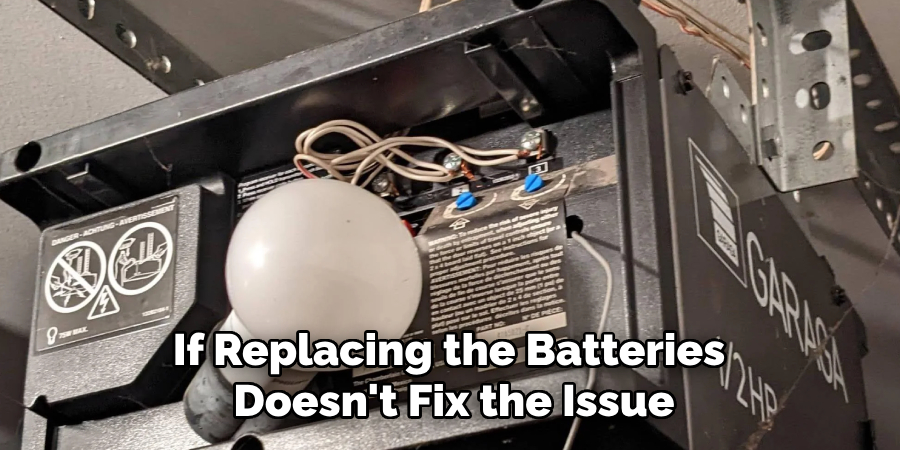
Step 3: Inspect the Antenna on the Garage Door Opener
The antenna on your garage door opener receives signals from the remote control. If the antenna is damaged or improperly aligned, it can lead to poor reception and inconsistent performance. Begin by locating the antenna, which is typically a thin, wire-like component hanging down from the main unit.
First, ensure that the antenna is hanging straight down and is not tangled or obstructed by any objects. A clear and unobstructed path is essential for optimal signal reception. If the antenna appears damaged or frayed, it may need to be replaced.
Next, gently clean the antenna with a soft cloth to remove any dust or debris that could be affecting its signal strength. Be cautious and avoid using any harsh chemicals that could damage the sensitive components.
If you have inspected and cleaned the antenna but are still experiencing issues, consider the environment around the opener. Metal objects or concrete walls near the antenna can interfere with the signal. Try repositioning the opener or removing any large metallic items nearby.
Step 4: Reposition the Garage Door Opener Unit
Repositioning the garage door opener unit itself can sometimes significantly reduce RF interference. Begin by examining the unit’s current location. If it is mounted in a place surrounded by metal structures, such as metal shelves or large tools, the interference could be adversely affect its reception.
Consider moving the unit to a spot with a clearer air path for signal reception. Opt for a location that is as central as possible relative to the remote controls you’ll be using around your home. If a complete relocation isn’t feasible, even minor adjustments to its positioning can sometimes yield improved performance.
When repositioning, ensure that all the necessary wiring is appropriately adjusted and does not get kinked or damaged during the process. Safety first: always disconnect the power to the opener before making any changes to its placement to avoid electrical hazards.
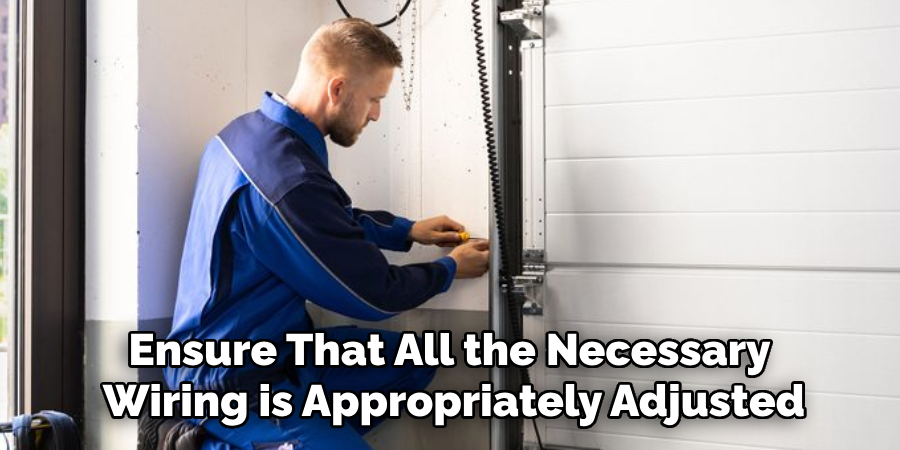
Step 5: Install a Ferrite Choke
A ferrite choke is a simple yet effective device that can help reduce RF interference. This small magnetic component can be clamped onto the power cable of your garage door opener or any other cable that might be carrying interference.
To install a ferrite choke, first locate the garage door opener’s power cable. Place the ferrite choke around the cable close to the opener unit. Close the choke securely to ensure it maintains a snug fit around the cable.
This device works by filtering out the electromagnetic interference that may be traveling along the cables, boosting the opener’s overall performance. If you’re experiencing severe interference, applying ferrite chokes to both the power and remote signal cables, if accessible, can be beneficial.
Step 6: Utilize Shielding Methods
If interference persists, consider using shielding methods to protect the garage door opener from external RF sources. There are multiple ways to achieve this:
- Aluminum Foil Shielding: Wrapping the unit in aluminum foil can sometimes block RF signals. Ensure the foil does not interfere with moving parts or obstruct the unit’s antenna.
- RF Shielding Paint: Specialized paint that blocks RF signals can be applied to the walls surrounding the garage door opener. This method is advantageous for homes situated near strong RF sources like radio towers.
- Grounding: Properly grounding the garage door opener can also help mitigate RF interference. Ensure the ground connection is solid and free from corrosion.
Step 7: Replace Remote Control Batteries
Even though batteries were checked in Step 2, it’s essential to ensure that they are not only the correct type but also within their effective lifespan. Over time, batteries lose their ability to hold a charge, which might not be immediately obvious but can contribute to intermittent signal problems. Using high-quality, fresh batteries is recommended for optimal performance.
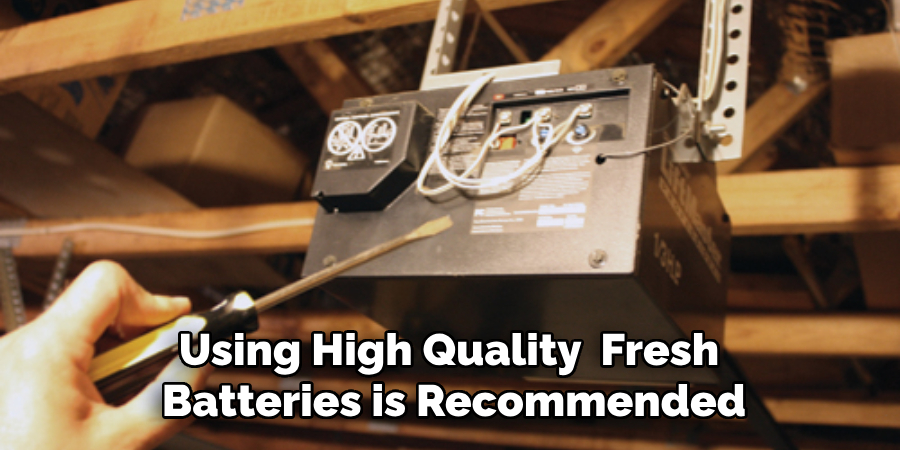
Step 8: Upgrade Your Garage Door Opener
If the above steps do not fully resolve the issue, it might be time to consider upgrading your garage door opener to a newer model. Modern garage door openers are equipped with advanced technology to minimize RF interference. Features like dual-frequency operation can automatically switch to a less crowded frequency, ensuring more reliability.
Consult your garage door opener’s manual or contact the manufacturer for recommendations on models known for robust RF interference rejection capabilities.
Step 9: Consult with a Professional
If all else fails, seeking the expertise of a professional might be the best course of action. A qualified garage door technician can diagnose the issue with sophisticated tools and recommend the best solutions tailored to your specific situation. They can also ensure that all components are correctly installed and configured for optimal performance.
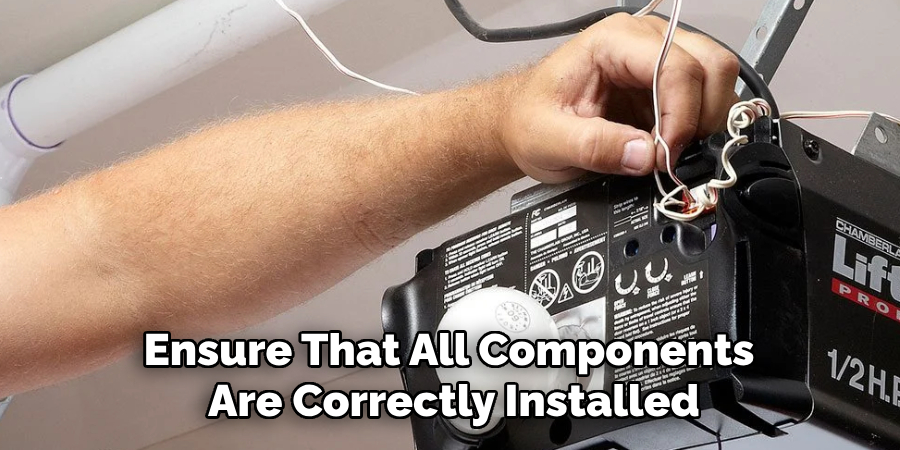
Step 10: Maintain Regular Checks
Finally, regular checks and upkeep of your garage door opener can prevent future incidents of RF interference. Regularly inspect the antenna, remote batteries, and the surrounding environment to ensure there are no new sources of interference. Routine maintenance helps catch potential issues early, ensuring a consistently smooth operation of your garage door opener.
Following these steps can significantly reduce RF interference, leading to a more reliable and efficient garage door system.
5 Additional Tips and Tricks
- Change the Frequency Channel: Some garage door openers allow you to switch the frequency channel. Refer to your device’s manual to see if this option is available and how to change it.
- Install a Ferrite Core: Adding a ferrite core to the wires of your garage door opener can help reduce electromagnetic interference. These small devices can be easily clipped onto the wires and are available at most electronic stores.
- Use a Radio Frequency Filter: Installing a radio frequency (RF) filter between the power outlet and the garage door opener can block unwanted RF signals, reducing interference.
- Reposition the Antenna: Sometimes simply changing the placement of the antenna on your garage door opener can improve signal reception. Ensure it’s not tangled with other wires and try to position it vertically.
- Minimize Other Wireless Devices: Reduce the number of wireless devices operating on the same frequency near your garage. Each device adds to the congestion and interference in the frequency spectrum, so only use what is necessary.
With these additional tips and tricks, you can improve the performance of your garage door opener and minimize any potential issues. Experiment with different solutions to find what works best for your specific setup.
5 Things You Should Avoid
- Using Unlicensed Devices: Do not use devices that operate on radio frequencies without the necessary licenses or certifications. Unlicensed devices can introduce significant interference and may even be illegal to operate.
- Ignoring Grounding and Shielding: Skipping proper grounding and shielding for your garage door opener and its components can increase RF interference. Always follow the manufacturer’s recommendations for grounding and shielding to ensure optimal performance.
- Placing the Opener Near High-Powered Electronics: Avoid placing your garage door opener too close to high-powered electronic devices such as wireless routers, microwaves, or heavy-duty machinery. These devices can emit strong electromagnetic fields interfering with your opener’s signal.
- Using Incompatible Accessories: Do not use accessories or aftermarket parts that are not specifically designed for your garage door opener model. Incompatible parts can cause malfunctions and introduce additional sources of interference.
- Overlooking Regular Maintenance: Neglecting regular maintenance and updates for your garage door opener can increase interference over time. Ensure that your equipment is maintained according to the manufacturer’s guidelines to minimize potential issues.
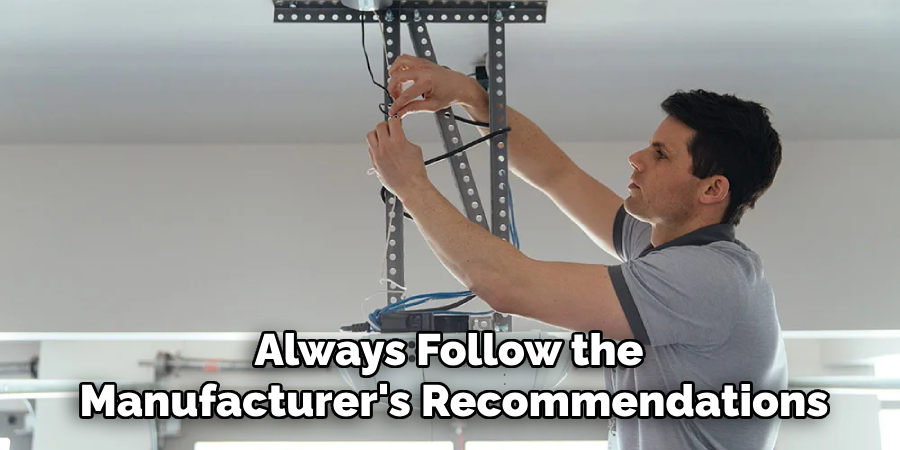
By avoiding these common mistakes, you can prevent interference and maintain optimal performance for your garage door opener.
Conclusion
In summary, how to fix RF interference with garage door opener involves a multi-faceted approach.
Start by verifying and improving your grounding and replacing remote control batteries regularly. If issues persist, consider upgrading your opener to a model with advanced RF interference mitigation capabilities. Consulting with a professional can provide tailored solutions, and consistent maintenance can prevent future problems. Additionally, implementing extra tips such as changing frequency channels, using ferrite cores, installing RF filters, repositioning the antenna, and minimizing nearby wireless devices can further enhance performance.
You can maintain a reliable and efficient garage door system by avoiding common pitfalls, such as using unlicensed devices and neglecting regular maintenance. Taking these comprehensive steps will ensure smooth and uninterrupted operation of your garage door opener.
About
Safety Fic is a distinguished figure in the world of Diy design, with a decade of expertise creating innovative and sustainable Diy solutions. His professional focus lies in merging traditional craftsmanship with modern manufacturing techniques, fostering designs that are both practical and environmentally conscious. As the author of diy, Safety Fic delves into the art and science of Safety Fic-making, inspiring artisans and industry professionals alike.
Education RMIT University
(Melbourne, Australia) Associate Degree in Design (Safety Fic) Focus on sustainable design, industry-driven projects, and practical craftsmanship. Gained hands-on experience with traditional and digital manufacturing tools, such as CAD and CNC software.
Nottingham Trent University
(United Kingdom) Bachelor’s in diyfastly.com and Product Design (Honors) Specialized in product design with a focus on blending creativity with production techniques. Participated in industry projects, working with companies like John Lewis and Vitsoe to gain real-world insights.
Publications and Impact
In diy, Safety Fic his insights on indoor design processes, materials, and strategies for efficient production. His writing bridges the gap between artisan knowledge and modern industry needs, making it a must-read for both budding designers and seasoned professionals.
